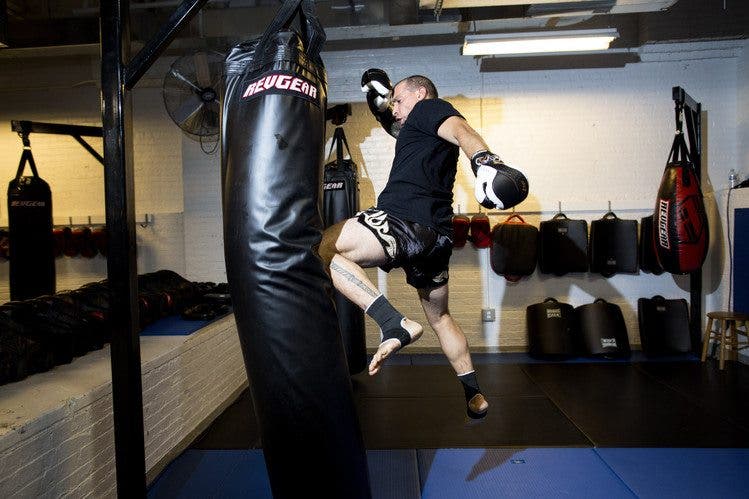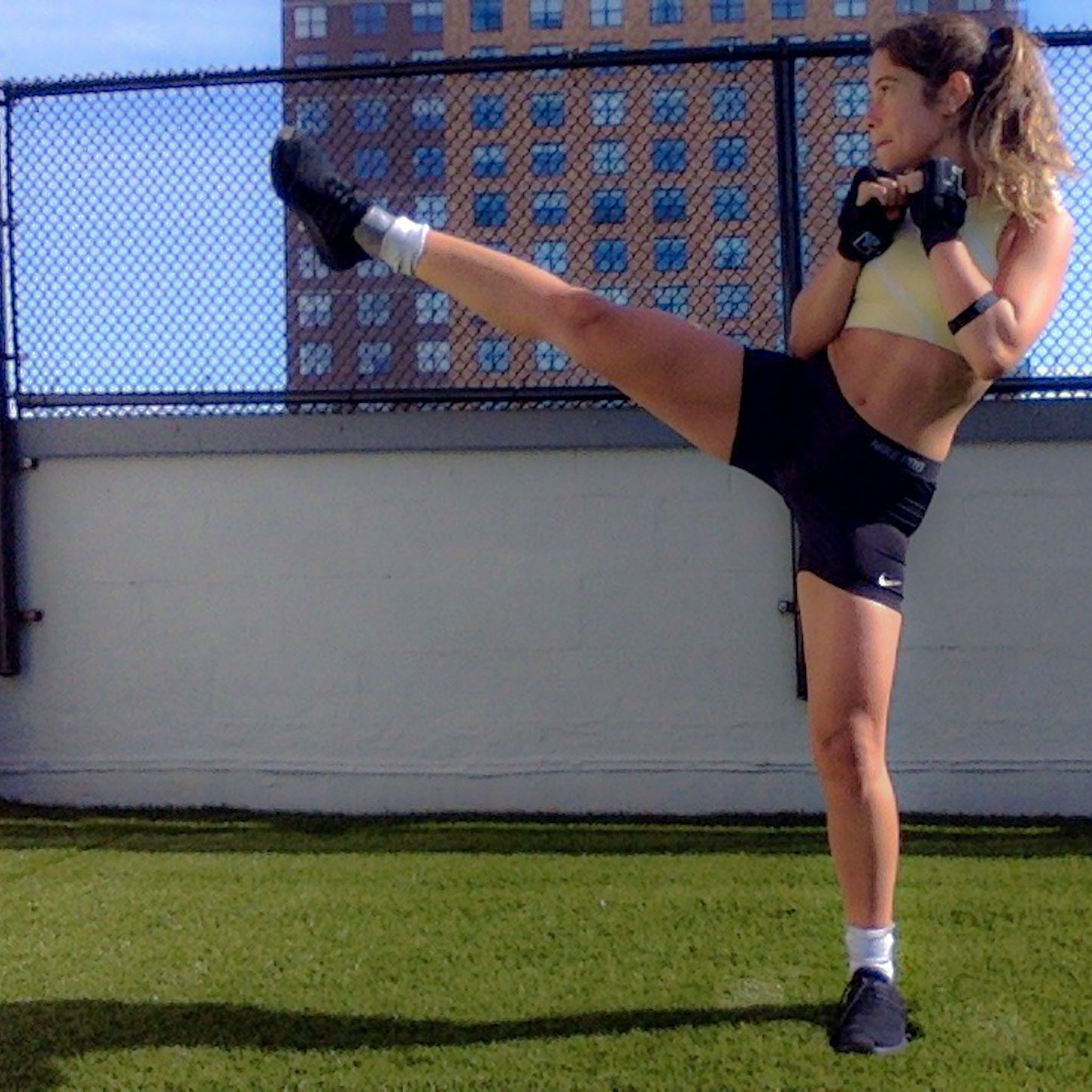

Kickboxing workout with bag at home full#
Start in your stance and complete full circles in each direction. “This is to train you on moving away from an opponent.”Ģ minutes circle drill B: Using the same center point, face away from it, keeping your back to it the whole time. “Always make sure you stay in your stance and your lead leg is pointing in the direction of the center,” says Strout. In boxing stance, step using your technique to make a complete circle around the object, then reverse the circle.

Focus on pushing off the correct leg.Ģ minutes circle drill A: Put something on the floor to use as your center point. When moving forward, push off back foot, and when moving backwards, push off front foot.Ģ minutes box steps: In boxing stance, move 6 steps forward, 6 steps right, 6 steps back, 6 steps left. When moving to the right, push off the left foot, and when moving left, push off the right foot.Ģ minutes forward and back steps: In boxing stance, take 10 quick steps forward and 10 steps back, back and forth. Rest as little as possible Boxing Workout 2Ģ minutes side steps: Start In your boxing stance, take 10 quick steps to the left, then 10 steps right, side to side. “Don’t go all out in the first 20 seconds, then stop: Keep punching the bag even if you’re just touching it.” If you’re new to this kind of intensity, do three rounds, not five, and give yourself a minute rest between them. Common combinations include:ģ-minute round: Basic jab, cross, and hook punches

Once you’ve got the individual punches, you need to put them together. “Don’t let your elbow travel out wider than your shoulder, nice and compact, and return it the same way you throw it.” Boxers with good hooks include Joe Frazier, Felix Trinidad, Oscar de la Hoya, and Mike Tyson. “The hook travels out from your shoulder and turns in toward your target halfway through the punch,” Strout explains. Unlike the others, this isn’t a straight punch: Its aim is to come at your target from the side, using your hips and legs for power. Hook: These can be done with either hand, but you should focus more on the hook done with the lead (nondominant) hand (hooks done with the other hand can leave you more vulnerable). The three basic ones are the jab, the cross, and the hook. “Keeping your elbows tucked also increases the power of your punches.” “If you let your elbows flare out, it leaves your body exposed,” Strout says. Keep your elbows in close, touching your ribs.

Bring your dominant fist up so you’re just touching the side of your chin with your index finger, and bring the nondominant fist up to about cheek height. (Lefties do the opposite.) Bring your weight onto the balls of your feet and soften your knees. To get a good stagger, righties should move the left foot forward so your heel is now touching that imaginary line, and shift the left foot back so the toe is on the line. To find your stance, start with your feet shoulder-width apart, with your feet standing on the same imaginary line. “Southpaw” or lefty stance is the opposite. If you’re right-handed, your left leg will be in front, so your more powerful arm is further back to maximize the force it can generate. When doing a boxing workout, the boxing stance is crucial to your success-it sets you up to both throw and dodge punches, and puts you in the best position to take a punch should your opponent land one.
Kickboxing workout with bag at home how to#
If you don’t know your jab from your cross, or haven’t a clue how to even stand properly, start here. The Best Boxing Speed Bags To Train With At Home Read article First, take this punch primer Think you’ve got what it takes? See if you can go five rounds with these tough punching bag workouts designed by Strout. “The training gets your mind prepared for it, too.” “Rest is very important, but you need to be able to perform under pressure,” Strout says. And when preparing for a match, sessions are five or six days a week. “The pace is changing constantly.”īoxing workouts are often long-at least an hour-to fit in a warmup, conditioning, and drills. “Workouts vary the exercises as much as possible to mimic the fight, which is never a steady pace like a run for an hour,” he says. Aside from technique, that means lots of fast and varied movement, with active rest-you’re almost never not moving in a fight unless, well, let’s not go there. “You’re trying to mimic what it’s going to be like in the ring,” says Jason Strout, head coach at NYC’s renowned Church St. Every wanted to try out a boxing workout? Have a punching bag in your basement you’ve been too intimated to use? Training like a boxer is all about intensity-you go hard.


 0 kommentar(er)
0 kommentar(er)
